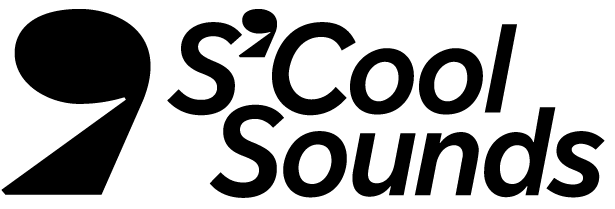Libya and Sudan
Lesson 7
Teaching Artist: Ronnie MalleySUMMARY
This is the seventh lesson from the “Ya Habibi” unit. Students will visit Libya and Sudan to learn about the region’s musical traditions and cultures. Students will also play rhythms to accompany traditional songs.
OBJECTIVES
Use a map to locate Libya and Sudan.
Identify cultural characteristics of Libya and Sudan.
Recite and play rhythmic patterns: iqa’ libyan chaabi and iqa’ merdoum.
Recite and play rhythmic patterns in unison: iqa’ libyan chaabi and iqa’ maqsoum, and iqa’ chobi and iqa’ merdoum.
MATERIALS
TEACHER BACKGROUND
This lesson was designed for two full classes/school periods. Teachers can amend the lesson duration to meet student needs, abilities, and accommodate class schedules. See the glossary at the end of this lesson and refer to it when necessary.
EXPLORE
1. Introduce students to North African rhythms by playing the video Libya and Sudan. Ask students to recall what they noticed and share what they wonder after listening.
2. Distribute the Ya Habibi Travel Diary and allow students to personalize it, drawing and recording important facts about Libya and Sudan. Refer to the glossary at the end of this lesson when necessary.
LEARN, PART 1
1. Have students vocalize and use body percussion to review the following pattern, called iqa’ libyan chaabi, at a slow, steady pace, then at increasing speeds:
Taka doum taka doum, Taka doum taka doum
Taka - clap once for each syllable
Doum - hands on thighs, or fist gently on chest
2. After reviewing, use body percussion to play this rhythm with the video Libya and Sudan as Ronnie sings “Yal Aneb.” When students are familiar, they can substitute or add tones in their learning space. For example, students may use desktops, chair legs, or a book.
3. Use body percussion or sounds from the learning space to review iqa’ maqsoum from previous lessons.
Doum, tak, – tak, doum, – tak, doum, tak, – tak, doum, – tak
Doum - hands on thighs, or fist gently on chest
Es - hold hands apart
Tak - clap
4. Divide students into two groups. Lead one group in playing iqa’ libyan chaabi using body percussion or sounds from the learning space. Then, lead the second group in playing iqa’ maqsoum using body percussion or sounds from the learning space.
5. When students are familiar, have them use body percussion to play iqa’ libyan chaabi with the video Libya and Sudan as Teaching Artist, Ronnie Malley, sings “Yal Aneb.”
6. Ask students to locate Libya and Sudan on a map. Invite students to summarize learning from this lesson. Lead the class in comparing and contrasting characteristics of rhythms introduced in this lesson and rhythms learned in previous lessons.
LEARN, PART 2
1. Review geography and cultural contributions of Libya and Sudan.
2. Have students vocalize and use body percussion to review the following pattern students learned in the first part of this lesson, called iqa’ libyan chaabi, at a slow, steady pace, then at increasing speeds:
Taka doum taka doum, Taka doum taka doum
Taka - clap once for each syllable
Doum - hands on thighs, or fist gently on chest
3. After reviewing, use body percussion to play this rhythm with the video Libya and Sudan as Ronnie sings “Yal Aneb.” When students are familiar, they can substitute or add tones in their learning space. For example, students may use desktops, chair legs, or a book.
4. Have students vocalize and use body percussion to review the following pattern, called iqa’ merdoum, at a slow, steady pace, then at increasing speeds:
Doum taka taka, Doum taka taka
Taka - clap once for each syllable
Doum - hands on thighs, or fist gently on chest
5. Use body percussion to play iqa’ merdoum with the video Libya and Sudan as Ronnie sings “Razaz Mouya.”
6. Play the video Razaz Mouya, Baghanilik for a live performance of the same song. Encourage students to play iqa’ medium using body percussion.
7. Optional listening: Play the video Al Balabil - Al Jazeera Interview and Performance, about the very popular group The Nightingales, pop icons who were as widely known as Taylor Swift is today.
PERFORM+SHARE
1. Once students are familiar, split the class into small groups (of three or four students each). Ask one group to use body percussion or tones in their learning space to play iqa’ libyan chaabi. Ask a different group to use body percussion or tones in their learning space to play iqa’ merdoum. Repeat until all groups have performed.
2. Record a video or audio version of your students’ performance, then upload it to the S'Cool Sounds Padlet.
GLOSSARY
‘Anab - grapes
Baghanilik - I sing for you
Chaabi - folk
Dalia - grapevines
Dunya - Arabic world for world
Khamsa - Arabic word for number five
Khumasee - pentatonic music scale; also called a blues scale
Leebi - Arabic for something or someone from Libya
Mouya - water (Sudanese Arabic dialect)
Razaz - sprinkles (Sudanese Arabic dialect)

